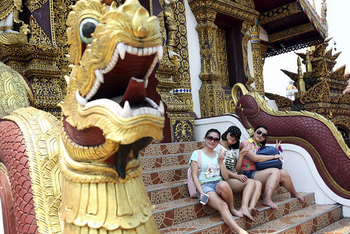From nerdy TV shows like Big Bang Theory to ancient poetry, there are plenty of factors influencing whether Chinese tourists end up eating cheesecake in Pasadena or, say, admiring a willow tree in Cambridge.

Rounding out the middle of the pack were countries such as France (No. 9), this year's hot-spot destination of Japan (No. 12) and Russia (No. 15). (See list below for full rankings.) The think-tank is affiliated with the China National Tourism Administration, a government body.











